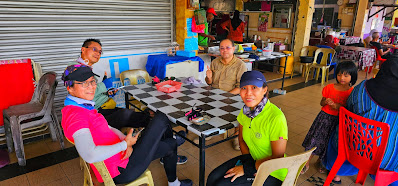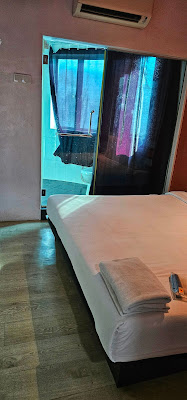On Dec 8 1941, 1 day after the bombing of Pearl Harbour, Japanese troops began their invasion of Malaya. Their first landing was in Kota Bahru and in just 2 months and 8 days, they had completed their conquest of Malaya.
The British and their allies (Commonwealth soldiers) were no match against the Japanese army. In just over 1 month, the Japanese had pressed on to Johor.
The Battle of Gemas as part of the wider Battle of Muar played a significant role in history. It was the first major Australian battle in the Malayan campaign.
In this Battle, the Australian army were assigned to ambush the Japanese soldiers at Gemencheh Bridge which spanned Sungai Kelamah. Their tactic was to blow down the bridge as the Japanese soldiers were crossing it and to rain down artillery on the remaining enemy on the other side of the river.
The operation proved a success but without back up reinforcements, the Australian soldiers had to retreat. Contrary to Wikipedia reports which glorified the ambush with over 1000 Japanese soldiers killed or wounded, the Australian War Memorial has a different story to share. It stated the ambush only slowed down the Japanese Army by an hour and within 6 hours, the bridge was rebuilt with timbers from nearby sawmills. By dawn on 15th January 1942, 36 hours after the ambush, Japanese tanks were seen crossing the bridge and heading towards Gemas.
In order to impede the further advancement of the Japanese soldiers, the Gemas Bridge and the Buloh Kasap Bridge were also destroyed.
Today, what remains of Gemencheh Bridge is just a wooden column retrieved from the river and laid by an obelisk built in memory of the battle and those that perished during the war. As for the Gemas Bridge and the Buloh Kasap Bridge, it remains broken with both ends still visible along the river banks.
Besides destroying road bridges to impede the Japanese army, the Segamat old railway bridge was not spared as well. This was however rebuilt after the war and continued to be of service until the new electrified double tracking line took over.
Below is a photoblog of our journey tracing the paths taken by soldiers during WWII
 |
| Battle of Gemas Memorial |
 |
| The noodle shop is set up in an old Chinese home |
 |
| All noodles are handmade in this kitchen. The proprietor shares that he has to wake up at 3 am to prepare them |
 |
| Kampung Baru Bekoh |
 |
Kampung Baru Bekoh
|
 |
| "Selamat Jalan", we leave Johor's border... |
 |
| Old wooden shophouse at Simpang Bekoh |
 |
| Route M15's Simpang Bekoh |
 |
Route M15's Simpang Bekoh
|
 |
| Strange to find a kampung with an English sounding name |
 |
| Nyalas is under the district of Jasin |
 |
| Captured in the photo is the school and the food court |
 |
| Nyalas...a small and sleepy town |
 |
| Within minutes, we have left Nyalas and reached the border between Melaka and Negeri Sembilan! |
 |
| Outside the memorial, along Route 1 |
 |
An obelisk built in memory of the Australian soldiers and the supporting forces who fought at this site from 14-15 January 1942
The 2/30th Battalion were assigned to blow up the Gemencheh Bridge in an effort to impede the advancement of the Japanese soldiers |
 |
| The wooden column which was once part of the Gemencheh Bridge |
 |
| Gemencheh Bridge before it was destroyed |
 |
| Sungai Gemencheh was once known as Sungai Kelamah as it is located near Felda Kelamah. This river was the fierce battleground between the Japanese Imperial Forces and the Australian soldiers. |
 |
| An overview of the memorial. The concrete bollards are anti tank blocks. A new bridge is recently opened to traffic on the north side of the memorial while the old bridge on the south side has since been abandoned. |
 |
| A new signage |
 |
| Old signage |
 |
| Reading materials |
 |
| Reading materials |
 |
| Wat tan hor |
 |
| Yellow wine mee suah |
 |
| After lunch, we proceeded to Muzium Keretapi Gemas |
 |
| Built in 1922, this railway station was once under siege by the Japanese Imperial Army |
 |
| Photo from the past depicting Japanese soldiers crouching in anticipation of attacks |
 |
A diesel locomotive, most of these are being replaced by electric trains
|
 |
| This signboard must be at least 100 years old since the station was built in 1922 |
 |
| Komplete Horse Shit 2 on the railway tracks |
 |
| Inside the locomotive |
 |
| Not everyday you get to drive a train so better take more photos! |
 |
| Wooden carriages |
 |
| Interior |
 |
| Cargo |
 |
| Cranes |
 |
| Sweeping view |
 |
| Another view |
 |
| Offices and platform |
 |
| Tipping the scale, time to diet |
 |
| Switch levers |
 |
| Friskie was here in 2019, now Komplete Horse Shit 2 takes the glory |
 |
| Time to leave for our next port of call |
 |
| This is how an old railway station looks like |
 |
| Passing by the new Gemas station |
 |
| Here we are back into Johor! We were practically interspersed between 3 states; mainly Johor, Melaka and Negeri Sembilan |
 |
| Gemas' Broken Bridge, photo taken from Google streetview. Unfortunately, we had sped past this bridge, mesmerized by the new railway line! |
 |
Google streetview of SK Ladang Fortrose @ https://maps.app.goo.gl/KVUk1MjRiR6CkdxT8
Fort Rose is where the 2/30th Australian Battalion assigned to ambush the Japanese troops at Gemencheh Bridge had escaped to when overwhelmed by fighting and unable to call for reinforcements. Back then, commanding officer, Lt Galleghan had refused the use of radios for security reasons and the phone lines were cut by Japanese scouts |
 |
| Strangely, the army were on the move! Here is our first encounter with them, right after Gemas and before Batu Anam |
 |
| Route 1 overlooking the signboard |
 |
| This plaque must be new as it wasn't around when we last visited Buloh Kasap in 2021 |
 |
| A taste of old school cooking which is reasonably priced |
 |
| We were very lucky as we walked right into a Chingay procession after dinner |
 |
| There were a lot of freebies for the spectators. Over here, young girls were giving out sweets |
 |
| "Yow Kai" in Cantonese means taking a walk on the streets. Here, the Gods from Segamat temples are taken out for a walk to give blessings to the people |
 |
| Pretty lady dressed as Goddess of Mercy giving away sweets and blessing people with holy water |
 |
| Car stereo company taking part in the procession. A bread shop was sponsoring bread while there were oranges given out to the public as well |
 |
| Fui Long Teng Temple fully decorated for Chinese New Year |
 |
| Outside the temple and the festivities |
-----------------------------------------------------------------------------------------------------------------
Segamat Red Orange Hotel
-----------------------------------------------------------------------------------------------------------------
Throwing oranges in Segamat River
Chap Goh Meh, also known as Chinese Valentine's Day was widely celebrated by the Hokkien community although in modern day, it has become a fun activity adopted by many. The act of throwing oranges in the river is thought to have originated in Penang in the 19th century although some believe it began amongst the Hokkien community in China.
Regardless of its origins, the act of throwing oranges can be traced back to the olden days when young, unmarried girls were not allowed to go out unchaperoned. However, on Chap Goh Meh, these girls will put on their Sunday's best to go to the temples for prayers. After the prayers, they will take a stroll by the river to throw oranges. Young men will wait eagerly by the river banks to catch a glimpse of these girls.
Click on below link where our friend threw an orange in Segamat River on Chap Goh Meh






























































































No comments:
Post a Comment